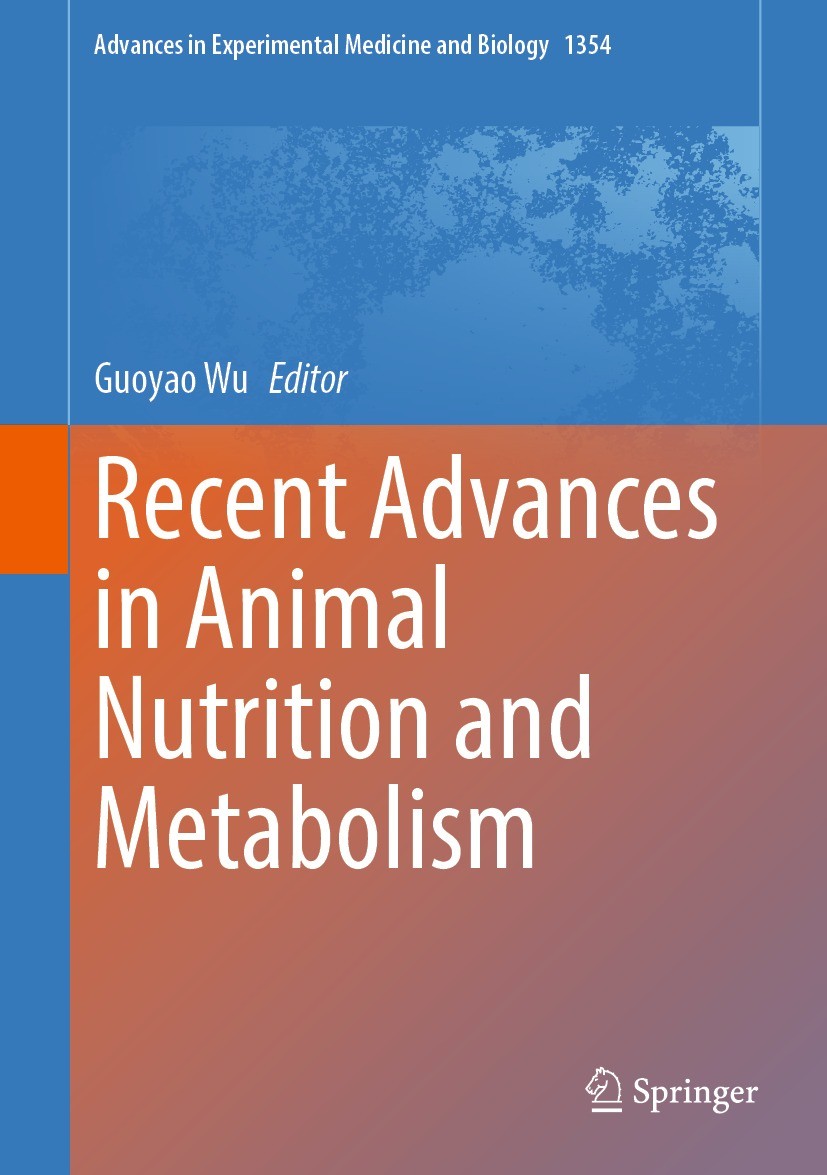| 书目名称 | Recent Advances in Animal Nutrition and Metabolism | | 编辑 | Guoyao Wu | | 视频video | http://file.papertrans.cn/823/822604/822604.mp4 | | 概述 | Covers hot topics in the nutrition and metabolism of terrestrial and aquatic animals.Addresses the use of new genome-editing biotechnologies to generate animals as bioreactors.Highlights the use of an | | 丛书名称 | Advances in Experimental Medicine and Biology | | 图书封面 |  | | 描述 | .This book covers hot topics in the nutrition and metabolism of terrestrial and aquatic animals, including the interorgan transport and utilization of water, minerals, amino acids, glucose, and fructose; the development of alternatives to in-feed antibiotics for animals (e.g., swine and poultry); and metabolic disorders (or diseases) resulting from nutrient deficiencies. It enables readers to understand the crucial roles of nutrients in the nutrition, growth, development, and health of animals. Such knowledge has important implications for humans. ..Readers will also learn from well-written chapters about the use of new genome-editing biotechnologies to generate animals (e.g., cows and swine) as bioreactors that can produce large amounts of pharmaceutical proteins and other molecules to improve the health and well-being of humans and other animals, as well as the growth and productivity of farm animals. Furthermore, the book provides usefulinformation on the use of animals (e.g., cattle, swine, sheep, chickens, and fish) as models in biomedical research to prevent and treat human diseases, develop infant formulas, and improve the cardiovascular and metabolic health of offspring wi | | 出版日期 | Book 2022 | | 关键词 | Nutrition; Growth; Health; Metabolism; Animal Production | | 版次 | 1 | | doi | https://doi.org/10.1007/978-3-030-85686-1 | | isbn_softcover | 978-3-030-85688-5 | | isbn_ebook | 978-3-030-85686-1Series ISSN 0065-2598 Series E-ISSN 2214-8019 | | issn_series | 0065-2598 | | copyright | The Editor(s) (if applicable) and The Author(s), under exclusive license to Springer Nature Switzerl |
The information of publication is updating

|
|
 |Archiver|手机版|小黑屋|
派博传思国际
( 京公网安备110108008328)
GMT+8, 2025-12-14 14:19
|Archiver|手机版|小黑屋|
派博传思国际
( 京公网安备110108008328)
GMT+8, 2025-12-14 14:19


